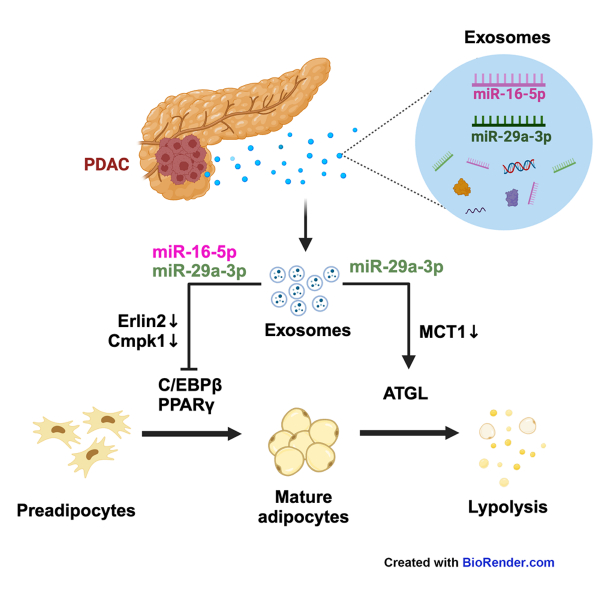Over 80% of the patients with pancreatic ductal adenocarcinoma (PDAC) have cachexia/wasting syndrome. Cachexia is associated with reduced survival, decreased quality of life, and higher metastasis rates. Here, we demonstrate that fat loss is the earliest feature of PDAC-exosome-induced cachexia. MicroRNA sequencing of exosomal components from normal and cancer-derived exosomes revealed enrichment of miR-16-5p, miR-21-5p, miR-29a-3p, and miR-125b-5p in serum exosomes of mice harboring PDAC and patients with PDAC. Further, miR-16-5p and miR-29a-3p inhibited adipogenesis through decreasing Erlin2 and Cmpk1 expression which downregulates C/EBPβ and PPARγ. Synergistically, miR-29a-3p promotes lipolysis through increasing ATGL expression by suppressing MCT1 expression. Furthermore, PDAC-exosomes deprived of miR-16-5p and miR-29a-3p fail to induce fat loss. Hence, miR-16-5p and miR-29a-3p exosomal miRs are essential for PDAC-induced fat loss. Thus, we unravel that PDAC induces adipose atrophy via exosomal miRs. This knowledge may provide new diagnostic and therapeutic strategies for PDAC-induced cachexia.
